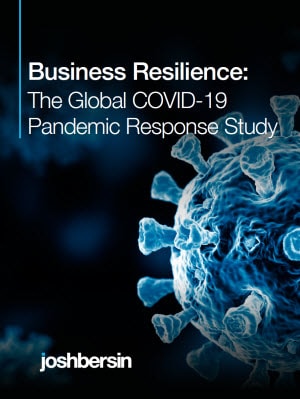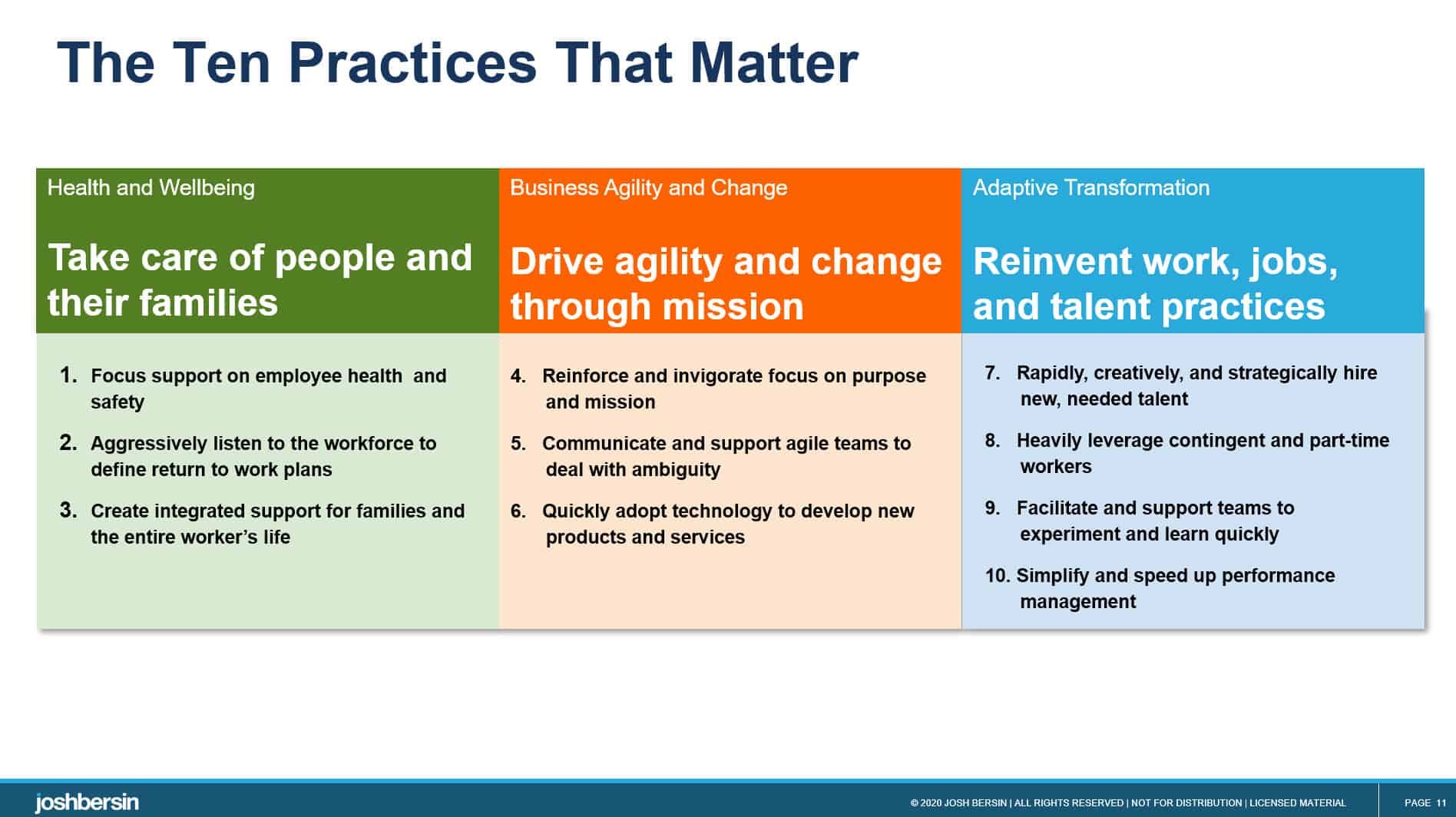The Ten Keys To Business Resilience
Businesses have been through insanity this year. Transportation and hospitality companies have seen plummeting demand; retailers and distributors have built all new delivery models; tech companies are seeing explosive growth; and banks and financial services companies are responding to huge economic changes.
 Through all this change the #1 issue on the minds of CEOs is resilience. How do we respond, react, and transform in the most positive and productive way? And how do we position ourselves for the Pandemic Economy in the year ahead?
Through all this change the #1 issue on the minds of CEOs is resilience. How do we respond, react, and transform in the most positive and productive way? And how do we position ourselves for the Pandemic Economy in the year ahead?
Of course it helps to be in the right place at the right time. If you were already a digital business, the chances are you’re doing well. But for most companies there are many new issues to consider, starting with the health and productivity of your employees.
Well, today we are introducing new research which shows which business and talent practices really drive growth. And among the 53 things we studied, ten were clearly the most important. Let me explain more.
The Background:
We’ve been working on this since March. Starting this Spring we started a series of weekly meetings with more than 350 companies in The Big Reset Initiative. This initiative, which includes companies from all over the US, Europe, Asia, and Canada, involved a series of five-week sprints, grouped into topical groups.
Based on demand we organized into these five topics: health and wellbeing, learning and leadership, workforce transformation, return to the workplace, and equity and justice. Each group was led by a senior HR executive and we collected more than 200 hours of discussions and interviews. Throughout the process, we listened to each company describe its challenges, strategies, and solutions. And we all got to know each other well.
In The Big Reset: What’s Working Now we published the first set of findings. (Another set is coming later in the year.) This report details the 20 strategies we uncovered, and it’s filled with case studies.
But as we evolved over the summer and Fall, we realized that the number of “good ideas” was explosive. Companies are doing dozens of innovative things to go back to work, evolve their management practices, and redeploy people into new positions. So we decided to do a quantitative study. We asked more than 1,400 companies to describe their level of adoption of 53 different practices, and then we correlated these results against business outcomes and various talent outcomes in each company
And here is what we found. (The report is available to Josh Bersin Company Members.)
Ten Keys To Resilient Business Performance
If you look at what we found, it quickly becomes clear that the overwhelming focus is on people. Activities like buying PPE, establishing a safe workplace, and enabling remote work are clearly all important. But what the research clearly shows is that these are “mandatory items,” things companies must do to survive. The companies that thrive in the last year are going much further – and they’re focusing on people in even more agile and creative ways.
For example, in the area of health and wellbeing, high-performing companies don’t just create a safe environment, they end over backward to listen, pulse, and respond to continuous employee feedback. Nobody really knows what the virus will do on a given day, but employees can tell you how customers, suppliers, and their own teams need help. We also found that “family support” is critical – an area most companies accommodated for years, but now has become a central focus.
In the area of change, the highest-performing companies became agile overnight. I just got off the phone with an HR leader from one of the world’s largest retailers (a very high performing company) and he told me the management team was making $50 Million decisions without a single PowerPoint deck. PepsiCo redesigned its US-wide performance process in a few weeks to save time and focus attention. Allianz created a “work at home” model in a week after spending years debating whether it’s a good idea.
And technology has now become the facilitator of change, not the “need to change.” In other words, we now use technology like a swiss army knife or a development tool: it has become a way to bring people together, train people, onboard people, and quickly find, survey, and support people. The high-performing companies came in over the weekend and took their HR tools and just “created new solutions” for the pandemic communications, leadership development, and other job transformation they needed.
I will never forget my conversation with one of the HR leaders at Sabre, who told me that more than half the company changed jobs, managers, or roles in only 60 days. They did this with a high degree of agility, fast decision-making, and lots of support for people.
 The third category of strategies is those designed to transform the business in real-time. When your customers are afraid to come into the store or your salespeople cannot meet face to face, you quickly do things differently. And this means stretching the jobs of the people you have, giving them extra time, attention, and money to adapt, and rapidly hiring temporary or contingent workers to help. And powering this transformation is a huge focus on company purpose, mission, and values.
The third category of strategies is those designed to transform the business in real-time. When your customers are afraid to come into the store or your salespeople cannot meet face to face, you quickly do things differently. And this means stretching the jobs of the people you have, giving them extra time, attention, and money to adapt, and rapidly hiring temporary or contingent workers to help. And powering this transformation is a huge focus on company purpose, mission, and values.
If there’s one thing the pandemic taught us, it’s that culture and values are more important than anything. When we ask people to work more hours, extend themselves into jobs they’ve never done before, and trust us to make the workplace safe – the whole safety net is based on culture. And culture comes from the top and from history. Great companies like Target and Sainsbury’s are reaching into their past and reminding their people why the company exists in the first place.
Not every company is adapting well. Our research showed that roughly one in five companies (across all industries) is responding well to the pandemic. Many are doing well, but some are falling behind.

I encourage you to read this research, and please contact us if you’d like to join one of our working groups. This is an ongoing effort and we have much more to learn in the year ahead.


